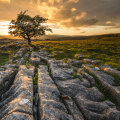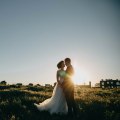Event photography is an art form that requires a special set of skills and the right equipment to capture the perfect shot. Whether you are a professional Family Photographer in Columbia SC or just starting out, knowing what type of equipment to buy can be overwhelming. From lenses to tripods to lighting gear, there is a lot to consider when it comes to event photography equipment. In this article, we will provide a comprehensive guide on everything you need to know about Family Photographer in Columbia SC equipment so that you can make an informed decision when it comes time to invest in gear. When it comes to Family Photographer in Columbia SC equipment, cameras are by far the most important piece of the puzzle. DSLR and mirrorless cameras offer the best combination of image quality and portability, allowing you to take high-quality photos without having to lug around a large camera bag.
Look for a camera with good low-light performance and fast autofocus speed. For a versatile setup, you should also consider investing in a range of interchangeable lenses. Wide-angle lenses are great for capturing sweeping scenes, while telephoto lenses are perfect for capturing detail from a distance. In addition to the camera itself, event photographers also need a range of accessories. A tripod is essential for keeping your camera steady when shooting in low light or taking long exposures.
You should also consider investing in a flash or two; these can help fill in shadows and add depth to your photos. For larger events, you may also need to invest in additional lighting equipment such as strobes or umbrellas. Finally, don’t forget about the basics like memory cards, batteries, and lens cleaners. When shooting events, it’s important to stay organized. Invest in a good camera bag that can hold all of your gear and keep it safe from bumps and scratches.
You should also consider investing in a laptop or tablet so that you can review your photos on the go. Finally, don’t forget about post-production. Investing in good photo editing software can help you touch up your photos and make them look their best. With the right equipment and a bit of practice, you’ll be able to capture stunning photos that will impress your clients.
Lenses
When it comes to lenses for event photography, look for a camera with good low-light performance and fast autofocus speed.This will allow you to capture crisp images in low-light conditions and quickly take pictures of fast-moving subjects. A mid-range zoom lens such as a 24-105mm is an excellent choice for many event photographers because it offers a wide range of focal lengths. You can also use prime lenses for specific situations, such as a 50mm prime lens for portraits or an 85mm prime lens for shooting from further away.
Camera
When it comes to event photography equipment, cameras are by far the most important piece of the puzzle. Choosing the right camera for the job is essential in capturing professional-quality photos.Digital single-lens reflex (DSLR) cameras are the best choice for event photography because they offer the highest image quality, fast autofocus, and a wide range of lenses. DSLRs also have adjustable settings that let you customize the look of your photos, giving you creative control over your shots. Additionally, they have larger sensors than other types of cameras, providing more detail and better low-light performance. When selecting a DSLR for event photography, make sure it has a good autofocus system.
Canon and Nikon are the two most popular brands for DSLRs, but Sony and Fujifilm also have excellent models. Look for one with at least 10 megapixels, as this will provide ample resolution for printing large photos. Finally, if you’re shooting in low light conditions, consider getting a camera with a larger sensor or an ISO range of up to 25,600.
Accessories
In addition to the camera itself, event photographers also need a range of accessories to ensure they capture the best possible photos. A few of the most important accessories for event photography include:Lighting:When shooting events, lighting can make or break a photo.Professional event photographers often use external lighting equipment such as LED panels, flash units, and light stands to create optimal lighting conditions.
Lenses:
Different types of lenses are used for different types of event photography. For example, telephoto lenses are great for shooting sports events, while wide-angle lenses are better suited for capturing group shots.Tripods:
Tripods are essential for keeping the camera steady and ensuring sharp images. Look for a lightweight tripod that can easily be transported from one location to another.Batteries and Memory Cards:
It’s important to have plenty of spare batteries and memory cards on hand.Make sure your batteries are fully charged and your memory cards are formatted and ready to go before each event.
Post-Production
Once you have taken your photos at an event, post-production is the process of making them look their best. This includes making adjustments to the exposure, contrast, color balance, and other settings. Additionally, you may want to make changes to the composition, remove unwanted objects, or touch up any blemishes. Depending on the type of event you’ve shot, you may also need to do some retouching or cloning to perfect the images. Post-production can be time-consuming and requires special software and a certain level of skill.Fortunately, there are plenty of options available for both Mac and PC users, from Adobe Photoshop and Lightroom to less expensive programs like Corel PaintShop Pro and ON1 Photo RAW. While some photographers prefer to edit their images on a laptop or desktop computer, there are also mobile apps like VSCO and Snapseed that are designed for editing on the go. Whether you’re in the field or at home, these apps can help you quickly adjust your photos and make them look their best.
Organization
When shooting events, it’s important to stay organized. Photographers need to be able to quickly find the right camera settings and lenses for each situation, switch between them quickly, and know exactly where each piece of equipment is located. To stay organized, it’s important to develop a system for managing all your equipment.Here are some tips for staying organized:Label Your Bags and CasesLabeling your bags and cases will help you quickly identify the equipment you need for any given event. Labels should include the type of bag or case, the type of equipment it contains, and a brief description of the contents. For example, you could label a bag “Camera bag – 5D Mark III with lenses.”Use Different-Sized Bags and CasesUsing different-sized bags and cases can help keep your equipment organized. Smaller bags and cases can be used for items like memory cards, batteries, and chargers.
Larger bags and cases can be used for cameras, lenses, and flash units. This will help ensure that each item is kept in its own space.
Organize Your Camera Settings
When shooting events, you’ll be constantly changing your camera settings to capture the best images. To make this process easier, you should organize your camera settings so they’re easy to find. Consider grouping related settings into categories such as exposure settings, white balance settings, and focus settings.Keep a List of Your Equipment
Keeping a list of all your equipment will help you keep track of what you have and where it’s located.This can be especially helpful when packing for an event or when you need to know if something is missing. The list should include each item’s name, model number, serial number, and location.
Develop a System for Storing Equipment
Developing a system for storing your equipment will make it easier to find the items you need quickly. Consider designating separate areas for different types of equipment such as cameras, lenses, flashes, memory cards, batteries, and chargers. Having designated areas will make it easier to find items when you need them. Event photography is a unique type of photography that requires specialized equipment to capture professional-quality photos.From the right camera and lenses to accessories and post-production techniques, having the right gear and organizational skills can make all the difference in the quality of your photos. With the right equipment and some practice, you’ll be able to capture stunning photos that will impress your clients.


